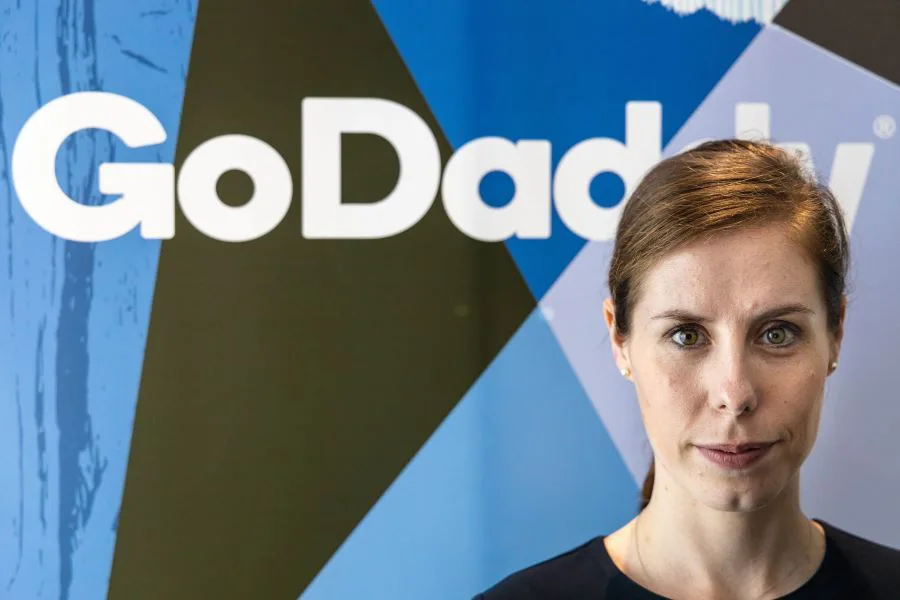How are top websites dominating the new normal? How do you get an e-store on the map? In Episode 17, we share the Startups Without Borders Summit panel with Selina Bieber, GoDaddy’s Senior Regional Director for Turkey, MENA and South Africa, digging behind the scenes of a leading website.
By Valentina Primo
It is a brand new world indeed; but what works and what doesn’t in this new normal? In Episode 17 of the Startups Without Borders Podcast, we bring one of the most popular talks that took place at the Startups Without Borders Summit, last November 14th in Amsterdam.
In this fascinating fireside chat, we speak to Selina Bieber, GoDaddy’s Senior Regional Director for Turkey, MENA and South Africa, on what makes leading websites get to the top of the charts. Last August, the company announced the launch of its Arabic website builder, in an effort to support entrepreneurs in the Middle East to build their websites and e-store in their native language.
“The MENA region has been ahead of the global norm in terms of internet penetration,” Selina says as she begins to unveil the changes in behavior that the Covid19 pandemic has brought along. “In the Middle East, we’ve got top 3 markets: the UAE, where 99% internet penetration, Egypt, with 50%, and Saudi Arabia, where it is close to 90%. What this new normal has done is to increase the level of socialization and communication online: the average time spent online increased by over 50% globally,” she says, a figure that would double the 7 hours that people spend on average online.
“What this new normal has done is to increase the level of socialization and communication online: the average time spent online increased by over 50% globally.”
Defining what it means to have an online presence
Kicking off your business with a website may seem like a daunting task for entrepreneurs, but according to Bieber, it is not enough to be on social media. “People often think that by being on social media means that they have online presence. But do you own it? Can you be found online?” Selina says, ‘s general suggestion is to get a domain name.
“Think of the website as your physical shop front. Your domain name is the address, and you build your website on top of that, integrating and decorating it the way you want. You can have three pages, which is the equivalent of three rooms, or displays. You don’t have to immediately build something tomorrow, but the benefit is that you start, you own it, you know that people can find you, and whether it is a personal brand, a business brand or an idea, you know that it’s there for you take forward, and build on, and grow,” she says.

Key factors for a leading website
There are core elements to a website to consider; design is one of them. “Make sure you carry your brand colors to the website. You don’t want to overload it with content; you want to make sure that people can come to your home page and get the information they are asking for, especially if they came through a search engine. If they had a question, they want an answer,” she says.
Selina points out the key importance of call to actions. “When we look at e-commerce, this becomes even more important, because we have the prime real estate above it all on the website,” she says. Is there a sale? Do you have any promotions? You want to have any promotions on the header image on your home page, and then have the call to action, such as ‘Buy now.’ “It’s really about knowing what you want as a business, and what you want to put up front on your site,” says Selina.
“You want to have any promotions on the header image on your home page, and then have the call to action, such as ‘Buy now.'”
Another key factor to put your website on the map is SEO (Search Engine Optimization). “Gone are the days of polluting your website with keywords. It’s really about what is relevant for your business and your customer. When someone searches for your website, what are they going to search for? What is your core product of service area and what are the keywords related to it? For example, design is a very broad keywords, so look at the keywords related to it and the keyword volume related to them,” she explains. This will help the website in search rankings.
Having Google Analytics is crucial, she says, as well as designing your customer journey. “You need to understand what the customer journey is. Is it easy for someone to come to your website and find products? Discoverability is also a key element. Are you on business listings? Do you have social media properties that you are leveraging to send people to your site?
How Covid19 is changing businesses
Selina ends the conversation by sharing best practices and examples in terms of pivoting, such as beauty salons and hair salons, which are shifting to offering home care packages. “What you can do is change the merchandise on the site really quickly. If today you have a ‘come and visit us’ as a call to action, tomorrow it can be ‘call us, here’s your home care package,” she says.
Having a two-road communication with customers is also key, as leading businesses are not only communicating how they are adapting to the pandemic on their social media, but also having conversations with them. “That constant communication was reassuring for consumers, but at the same time asking questions like ‘how are you coping? what are your needs?’ gives valuable feedback to adapt your tools, services and products to meet the consumer needs,” she says.

















[…] in November, Bieber took part of the Startups Without Borders Summit, in a talk titled: “Be online or be invisible,” which is now available on the Startups Without Borders […]